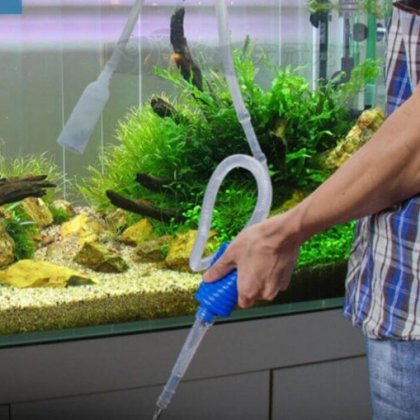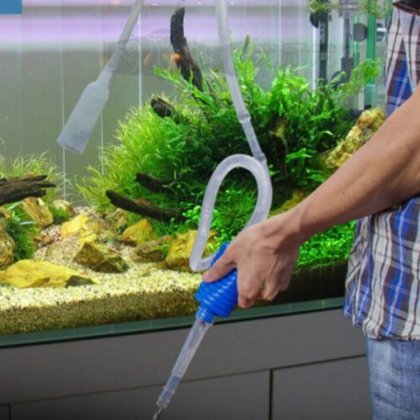|
Quick Facts :: |
|
|
Care Level: |
Easy |
|
Temperament: |
Aggressive |
|
Maximum Size: |
6" |
|
Minimum Tank Size: |
45 Gallons |
|
Water Conditions: |
74-86° F, pH 6.5-7.5, dH 8-15 |
|
Diet: |
Omnivore |
|
Origin: |
Central America |
|
Family: |
Cichlidae |
|
Species: |
Salvini |
|
Aquarium Type: |
Cichlid-New-World |
Salvini Cichlid Aquarium Care, Feeding and Native Habitat Information
The Salvini Cichlid is brightly colored cichlid which is native to the many lakes and rivers of Central America. Salvini Cichlids are easy to care for and are a hardy species that can tolerate varying conditions and they don't require a large aquarium; they are suitable as mid-size cichlids for new hobbyists that are learning the basics as well as the more advanced hobbyist looking for a mid-sized, colorful species that can coexist with other aggressive cichlids; because of this they are very popular in the trade and are readily available at a very reasonable price average of around $5 USD. The Salvini Cichlid is has an elongated body with a pointed head and has a bright yellow base color with two black bars running horizontally across their upper half. The lower half of their body has a varing amount of red with blue highlights. They also have four black bars that run horizontally across their face as well as yellow, red, and blue fins with black on the front half of their dorsal fin.
Salvini Cichlids require a tank of at least 55 gallons with a sandy to smooth gravel substrate and should be provided with driftwood, rock structures, caves and live plants for territory and hiding places. They do not usually burrow or destroy plants (although some individuals will do so), but it's recommended that plants either have strong root structures, are potted, or attached to rocks or driftwood to make sure they are secure; Salvini Cichlids aren't sensitive to higher intensity lighting, but floating plants are appreciated for the cover as well as some constantly shifting areas of shade (they are also said to have better coloration with e presence of plants in their environment). Although they are able to tolerate varying conditions in the aquarium, they need moderate water movement along with strong and efficient filtration; quality biological, mechanical, and chemical filtration is recommended. Salvini Cichlids are territorial and can be aggressive; they should be housed with other aggressive tank mates that are chosen carefully while considering their relative sizes and aggression levels. They also tend to be aggressive towards their own kind and multiple specimens should be added at the same time.
Salvini Cichlids are omnivores and naturally feed on insects, macroinvertebrates, and small fish in the wild. They should be provided with a variety of meaty and vitamin enriched foods such as live, frozen or freeze-dried brine shrimp, small insects, insect larvae, bloodworms, chopped earthworms, tubifex worms, blackworms, and a variety of pellet and flake foods. The wider the variety of foods they have, the more vivid their coloration will be. Feed once or twice a day and only what they will consume in a few minutes.
Salvini Cichlids are fairly easy to sex as the male generally has longer, pointy anal and dorsal fins and a more vibrant coloration. The female will develop a patch on the middle of her dorsal fin as well as a dark spot on her lower gill cover. Once they pair up, they will form a nuclear family and when they breed, a total of around 500 eggs will be deposited on a flat, sloped to vertical surface after multiple passes by the female. The male will follow and fertilize the eggs and then begin to defend the territory while the female guards and oxygenates the eggs. 2-3 days later the eggs will hatch and the fry will then be placed in a small pit or similar structure and sometimes moved several times by the female until the fry have consumed their yolk sacs. They fry can be left with their parents as their parents will take good care of them. They fry will search for particles of food on the substrate and can be fed Artemia nauplii (brine shrimp). After a month, the fry will start to venture out on their own and start to ignore the care of their parents. After 2 months the fry should be around .75 inches and taking care of themselves. The fry should be fed twice a day to keep them in good health.
No reviews found!













































No comments found for this product. Be the first to comment!